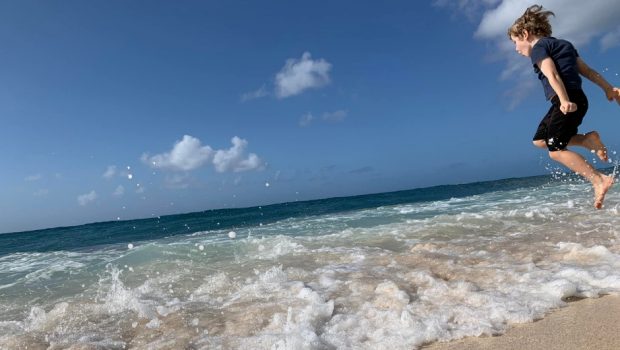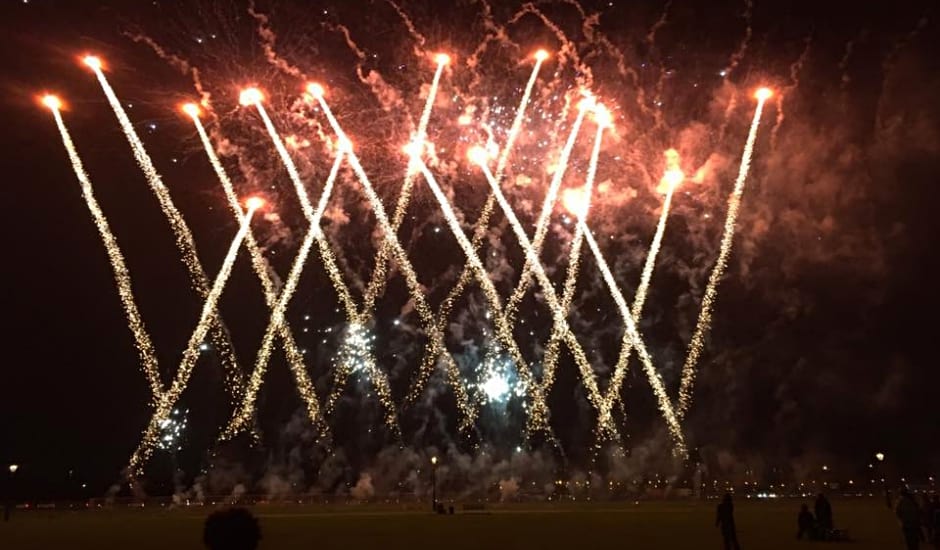Glasgow! Edinburgh’s less refined older brother. Slightly larger, less history and an economy based more on manufacturing, we spent some time in Scotland’s largest city checking out some of the sights.
First time
My first time in Glasgow was actually back in 2011. I’d just got off the train from Edinburgh and headed out of the train station to get my bearings, when I noticed in the distance, across George Square, a large group of people clustered near the City Council building.
A hooter sounded and they started screaming and running towards me. I briefly glanced around and none of the people around me were too concerned, so I too ignored the horde of people. And then, well before they reached me, another hooter went off and they stopped screaming, stopped running and calmly turned and strolled back to where they had started from.
I saw that there was a police officer nearby, so sauntered over and casually asked what was going on. She looked at me like I was certifiably insane and explained that it was the filming for the Brad Pitt movie World War Z. I guess that it had been front and centre in Glaswegians minds for the months that they had been filming, but I’d been blissfully unaware until stumbling across it.
Glasgow had been transformed into a (cheaper) replica of Philadelphia. The cost of shipping cars over from the US, changing street signs and generally altering the city of Glasgow was apparently cheaper than getting permits to shoot on-site in The City of Brotherly Love. Crowd control barriers split the Square in two, and a small crowd peered over it watching proceedings. At night they took down the railings and let the public ramble through the set and check it all out.
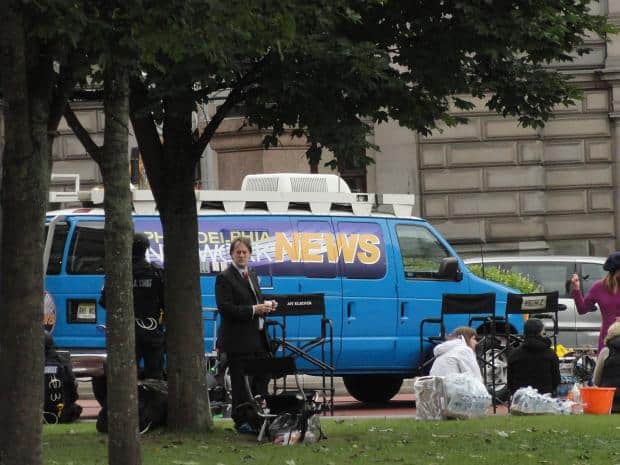
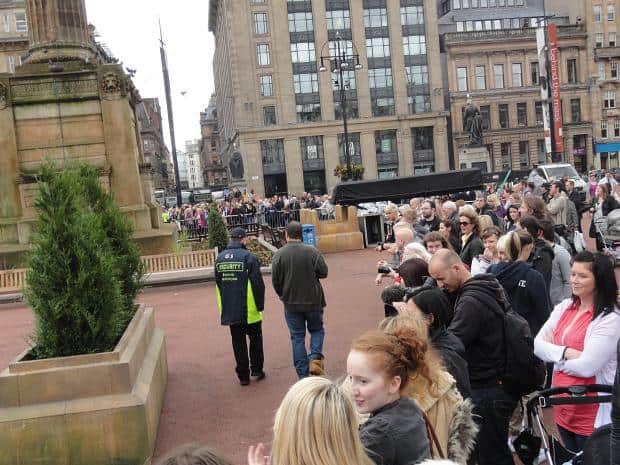

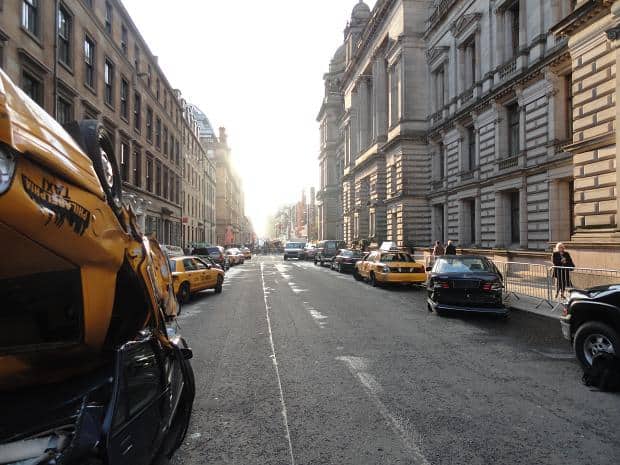
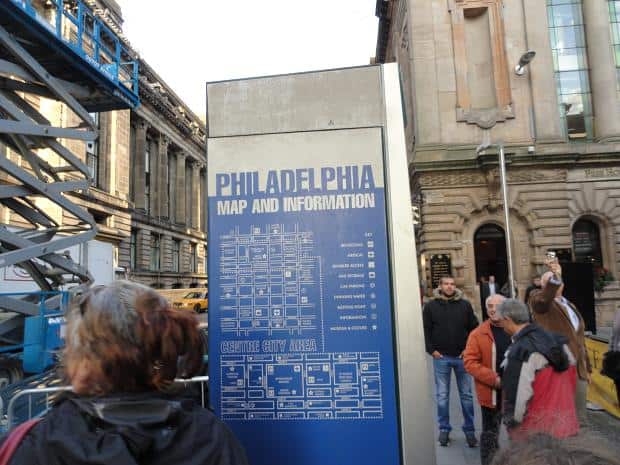
More Recently
Obviously every time you go to Glasgow you can’t expect to be on the set of a major motion picture, and the most recent visit was a Brad Pitt free zone. We started off investigating the west of the city: taking the underground to Kelvinbridge Station and then walking along the River Kelvin through Kelvingrove Park to the University before heading to the TripAdvisor rated number one thing to do in Glasgow – the Kelvingrove Art Gallery and Museum.
Kelvinbridge Station
The underground in Glasgow does a single loop of the city, with 15 stops in total, and has short platforms which are disconcertingly narrow. You’d be hard pressed to get more than three people deep on them and I constantly felt like someone could very easily fall onto the tracks.
The trains themselves reminded me of the Piccadilly line in London, with low slung carriages – but they were much, much newer. Seeing how there is only one line the big navigation point is whether you want to go clockwise or counter clockwise and while the tickets were a touch more expensive than the bus, it was pretty empty when we travelled.
Kelvinbridge is named after the bridge over the River Kelvin which feeds into the mighty Clyde river which joins Glasgow to the Irish Sea and the North Atlantic beyond. We made our way along the path leading by the riverside through the parklands, admiring the range of shopping trolleys sticking out of the free flowing waters and avoiding the joggers, cyclists and dog walkers all getting an early start to the day.
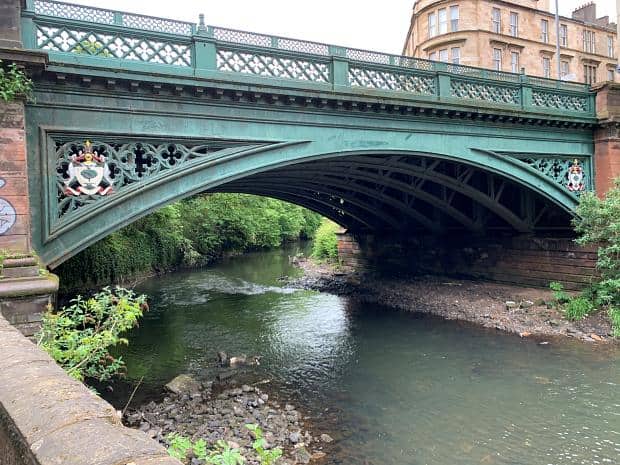
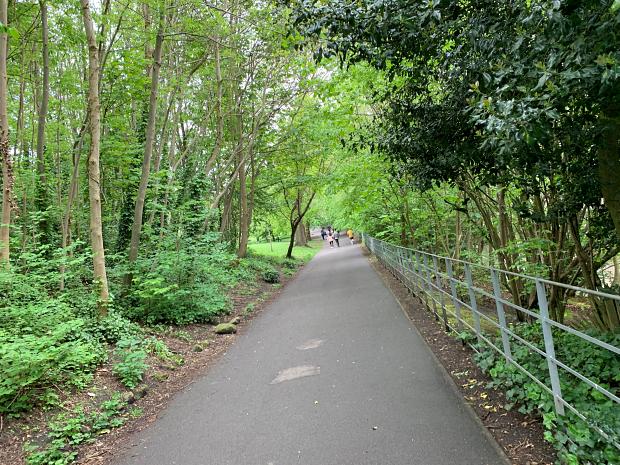
University of Glasgow Cloisters
Before too long we had crossed the bridge and headed up the hill to the University of Glasgow Cloisters under the Gilbert Scott Building. The cloisters in the 19th Century Building featured vaulted ceilings – very picturesque in the morning light. When we went there weren’t many students around, but I dare say midweek during term time there would be crowds of students heading to class.
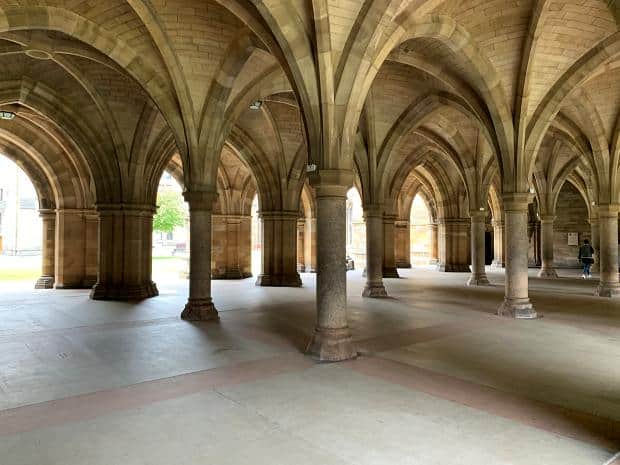
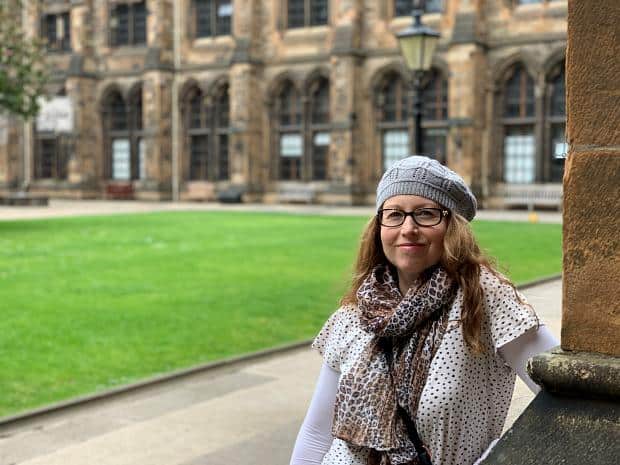
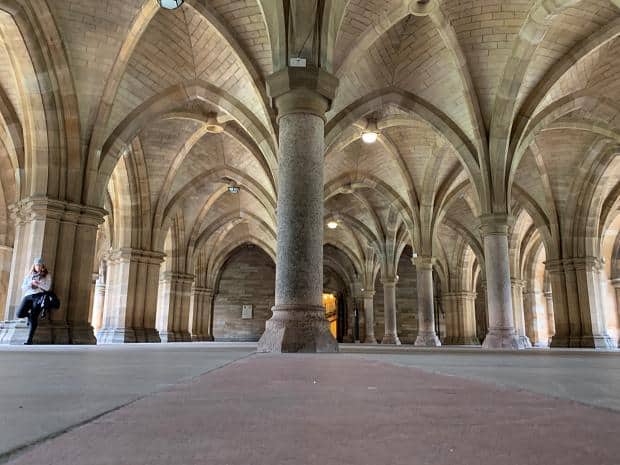
Heading back down the hill we followed the path past other University buildings, the only other people around were family groups – parents accompanying youthful prospective students and younger siblings looking around with wide eyes. A row of statuesque houses turned out to be the Stair Building, named for James Dalrymple (1619-1695), 1st Viscount Stair, a graduate of the University who became Scotland’s greatest jurist. It currently holds the University’s School of Law.
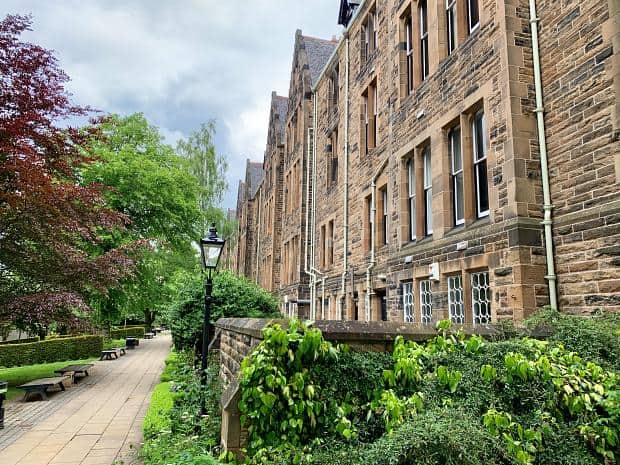
Kelvingrove Art Gallery and Museum
Across the road at the Kelvin Hall we could have spent £14 and spent the afternoon with Trix, the most complete Tyrannasaurus Rex skeleton in the world, but we elected instead to head to the Kelvingrove Art Gallery and Museum for free.
Outside the museum tucked into a corner is a monument to the Cameronian Rifles, one of the local regiments, and a brass relief map of the neighbourhood, the blue of the oxidisation discoloured in the most popular areas from fingers tracing routes and pointing to places of interest.
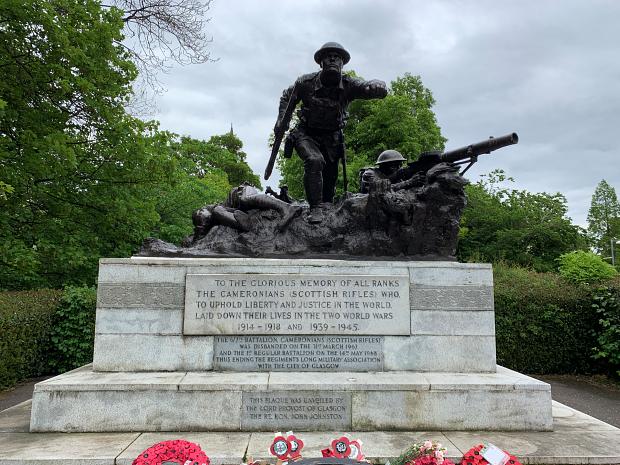
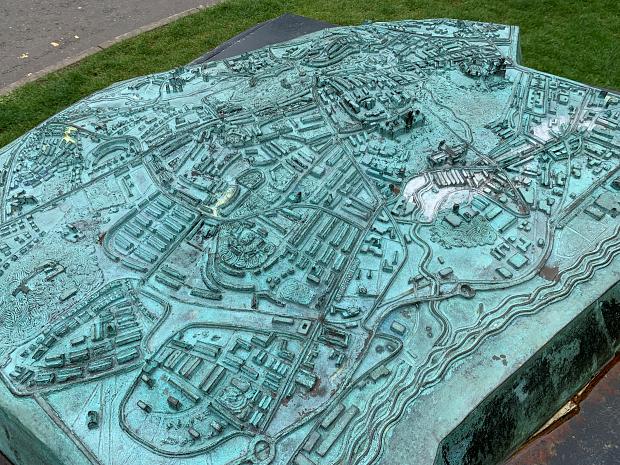
The Central hall dominates the entrance with its high vaulted ceilings and enormous pipe organ at the far end. Free organ recitals are on offer (usually at 3pm, but check their website), and we were lucky enough for our visit to coincide with one.
When the player started Ange and I looked at each other. There could be any number of reasons for organ music to sound so bad – poor performer, unusual music (don’t get me started on Serialists) but we decided that maybe the organ needed tuning.
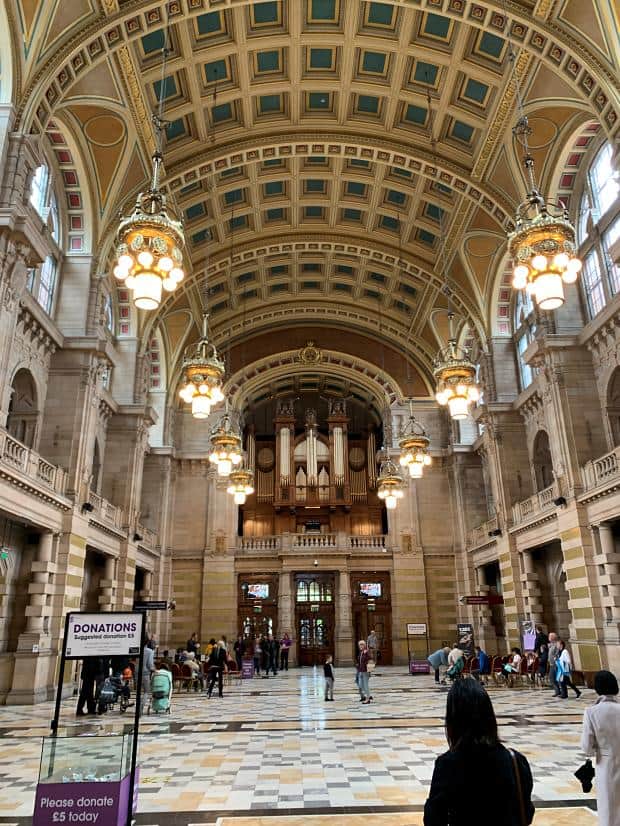
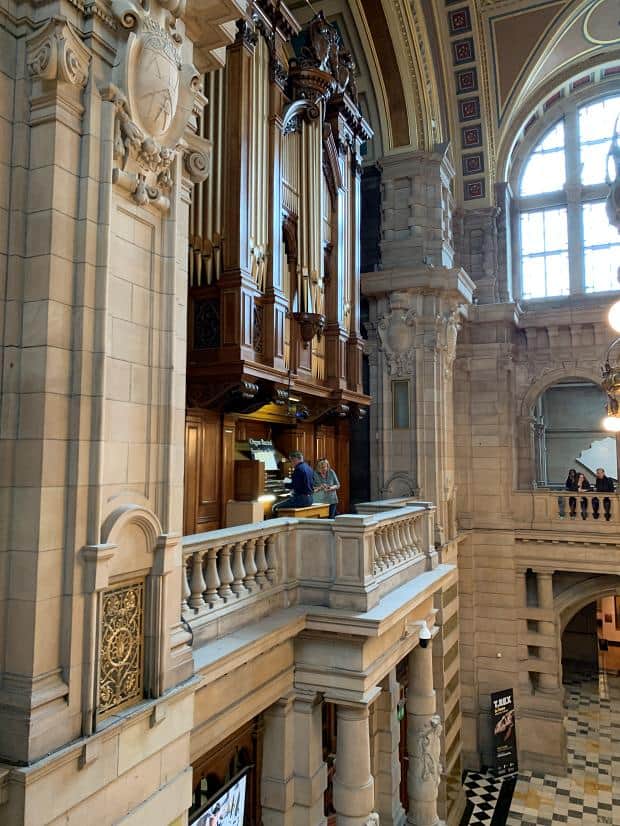
Large wings opened from the central hall with a wide range of exhibitions. We wandered a little, checking out the Egyptian section, the natural science section and ended up briefly following an organised tour as they were shown through some of the history of Glasgow. I was a bit surprised by all the animal heads mounted on the walls – traditionally the way hunters show off their trophies, which made the whole conservation message a little incongruous.
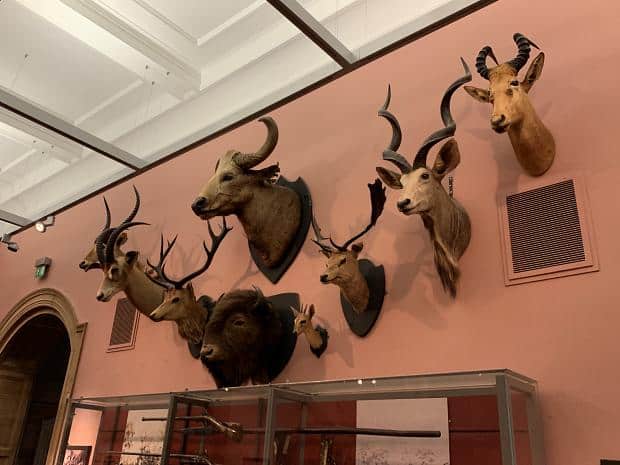
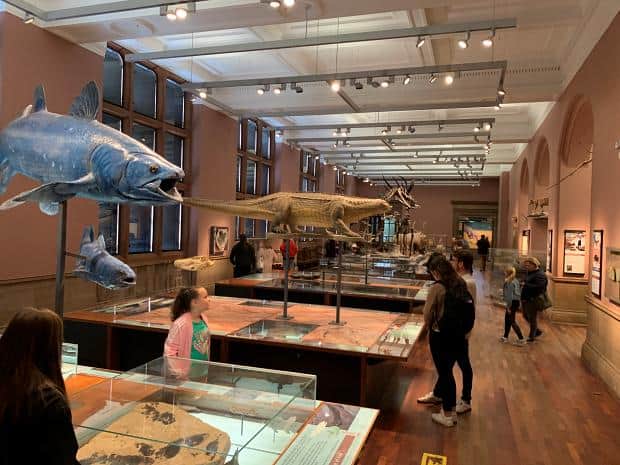
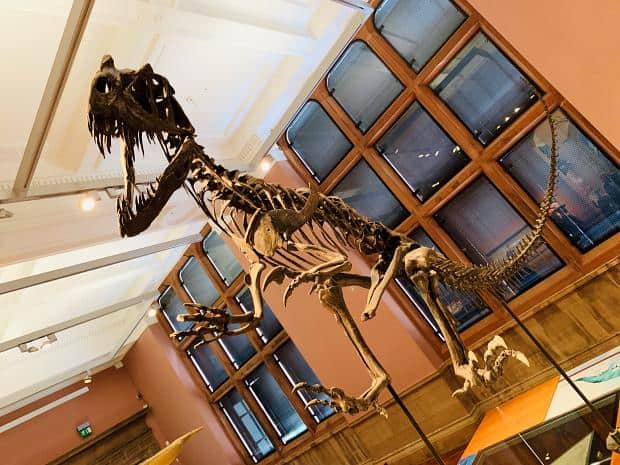
We ended up under the centerpiece of the museum, a Mark 21 Spitfire built in 1944. We’d only scratched the surface of the Museum – there was a wealth of things to see and explore and while we’d certainly enjoyed our time there, it was time to go. It was one of those places that you couldn’t really take it all in in one journey. Worth a return visit!
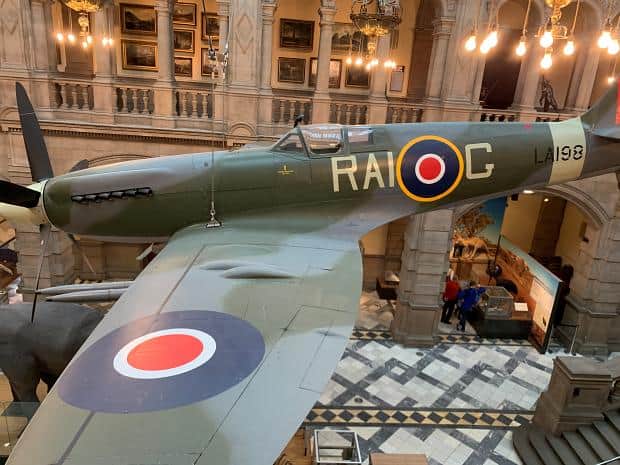
Slouch Bar
We’d heard good things about the Slouch Bar and so headed back into town for a brief walk up the hill to hunt it down. In the basement level we found Slouch and settled into a booth. I could see why it had been recommended for us – the music was classic 1990s and the patrons were of an age to have seen that era firsthand the first time around.
I couldn’t figure out why the TV screens were showing music videos unrelated to the music being played, but it was cool to hear old favourites, even if the volume was so loud that it made it difficult to converse. The cocktails and pizzas had punny names, and so me and Ange shared a jug of Love Will Tear Us Apart which was very long on ice and short on schnapps.
The pizzas were good though, and we persuaded ourselves that we needed a square each of their sticky toffee pudding, served with a dollop of ice cream. Yum!
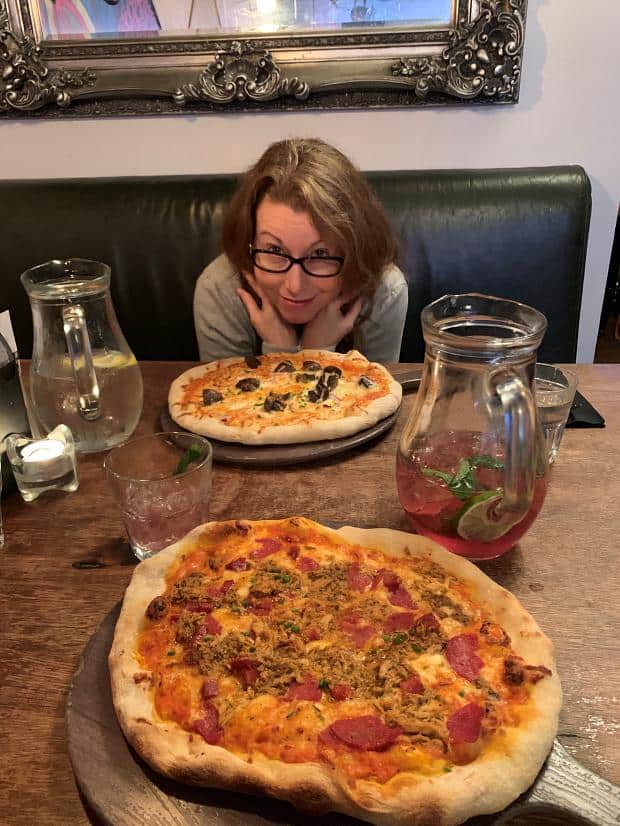
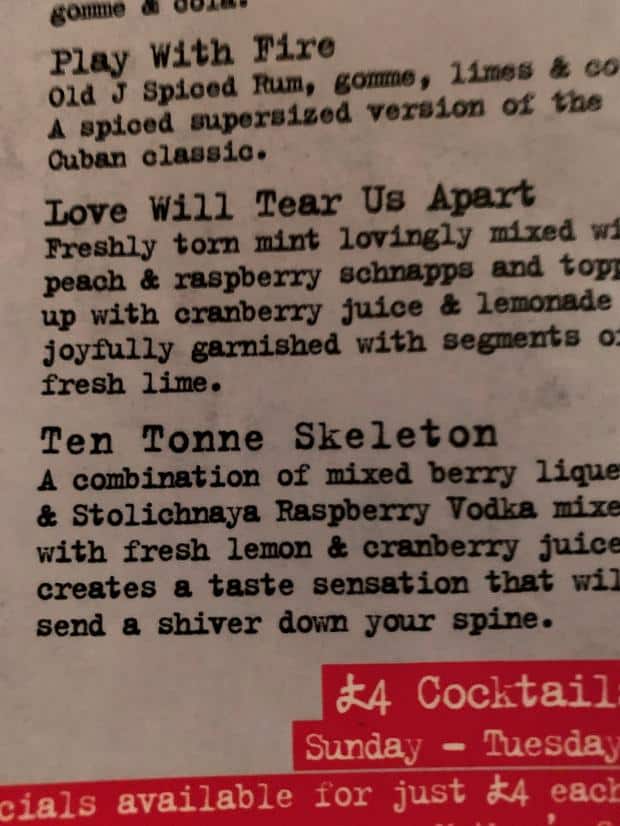
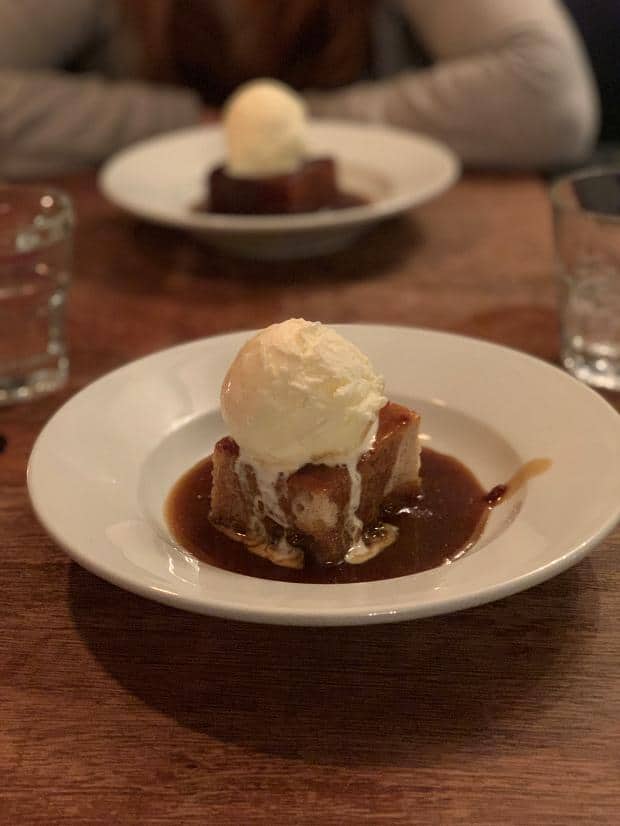
GOMA & The Lighthouse
GOMA
The next day started in town with a trip to the Gallery of Modern Art. I’d seen the statue of the Duke of Wellington outside the building on my previous trip, marvelling at the students who I assumed had put the traffic cone on the statue’s head.
I since found out that while it had started as a student jape back in the 1980s, it had become an intrinsic representation of Glaswegian culture. Initially the council had removed it, but every time they acted, it was replaced.
In 2013 the council and police decided they’d deter the replacing by modifying the plinth. This provoked a backlash as the local community expressed that the cone represented Glaswegian culture and that it should be allowed to remain. Slowly the powers that be came around to that way of thinking, helped no doubt by the cost of removing the cone and by the more permanent solutions of altering the plinth.
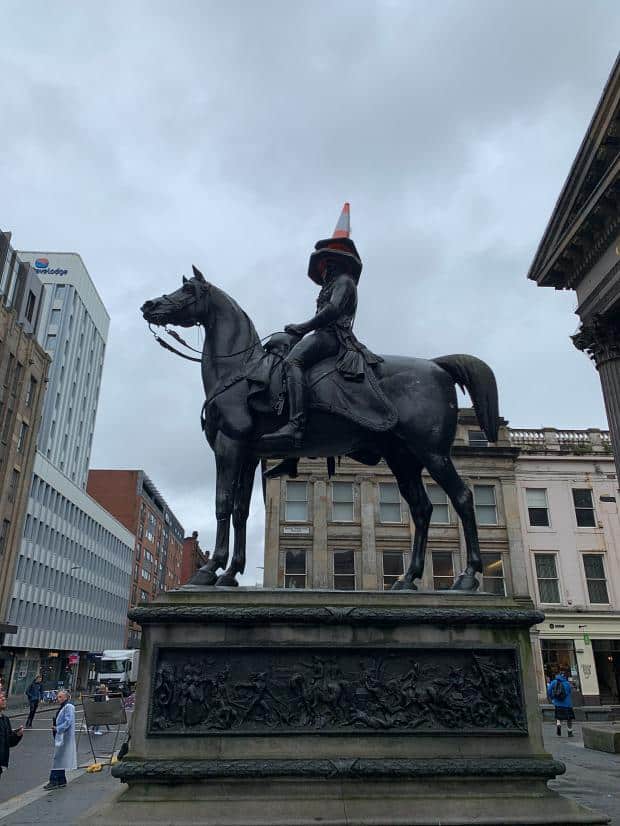
Unfortunately the interior of GOMA is not as interesting as the story of the cone. I found the exhibits sparse, and even when the artists themselves were interesting, the layout of the exhibit detracted from rather than added to the experience. Disappointing.
On the top level a children’s art centre enjoyed a great view out over the city including the pyramidal skylights providing light to the rest of the gallery. We spoke briefly with the lady managing the area who told us a bit of history of the building and local artists.
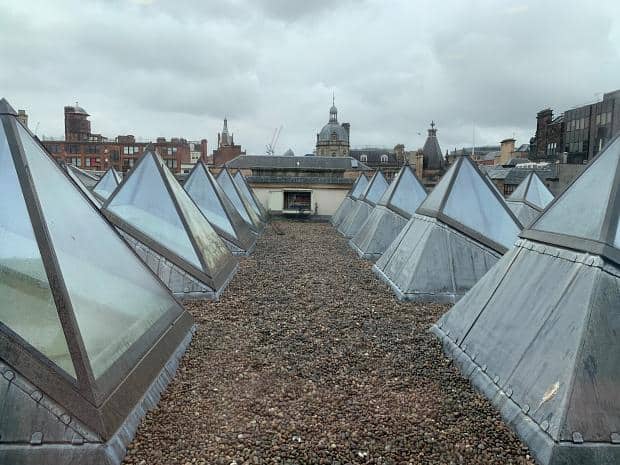
Lighthouse
We headed over to the Lighthouse which we’d seen from the top floor of the GOMA. I got confused by the lift signage and we ended up in a viewing room on the 6th floor of the Lighthouse complex, and after retracing our steps we found the correct entrance to the main tower (level 4, with the baby recycling station according to the signage).
The entrance is up the escalators and then tucked in the corner past the Mackintosh Centre, and consists of a circular staircase lining the old brick of the tower. The views form the top are, as you’ve probably gathered, quick spectacular. I overheard someone else joking that Mackintosh must have been a nut if he built a lighthouse this far inland!
After we’d caught our breath and taken in the views, we headed back down the staircase (so much easier than the upward journey) and back into the rainy Glasgow streets.
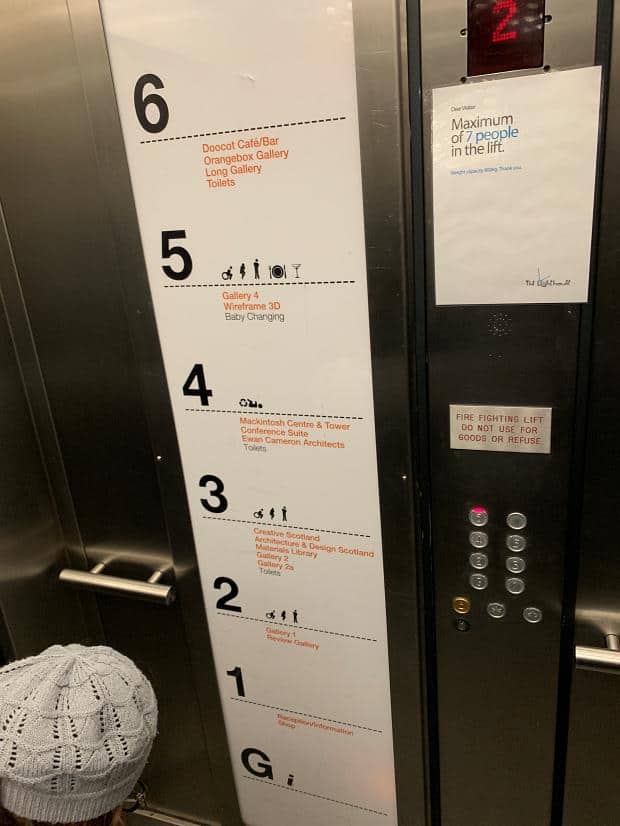
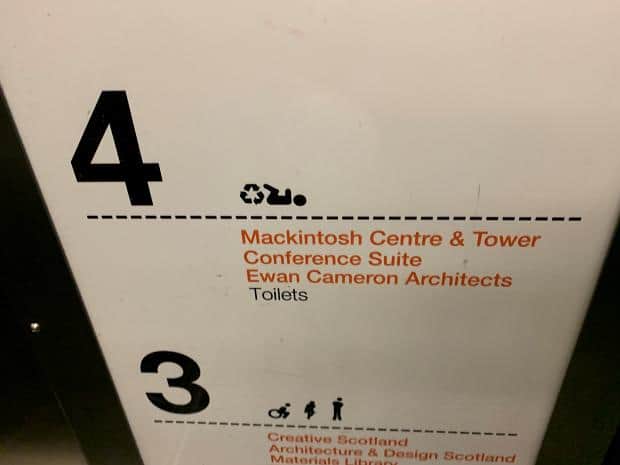
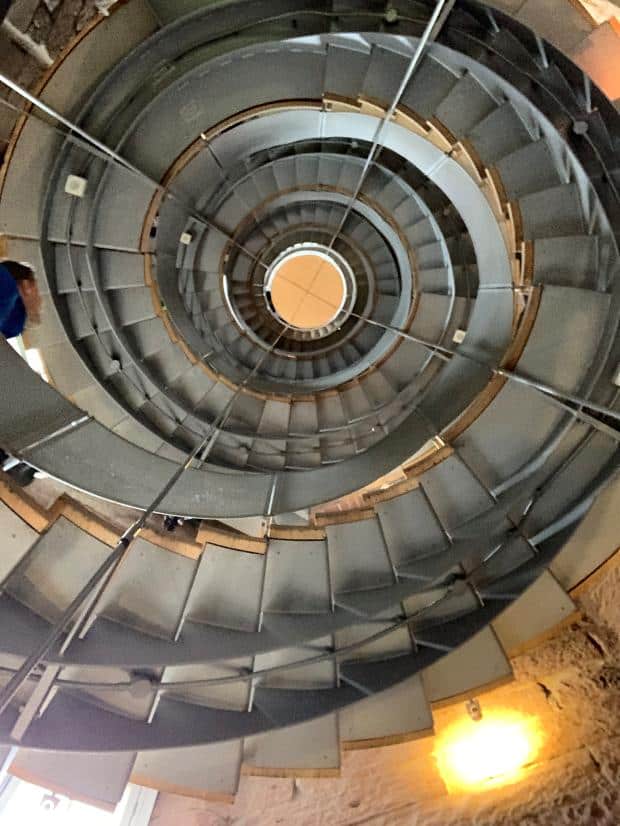

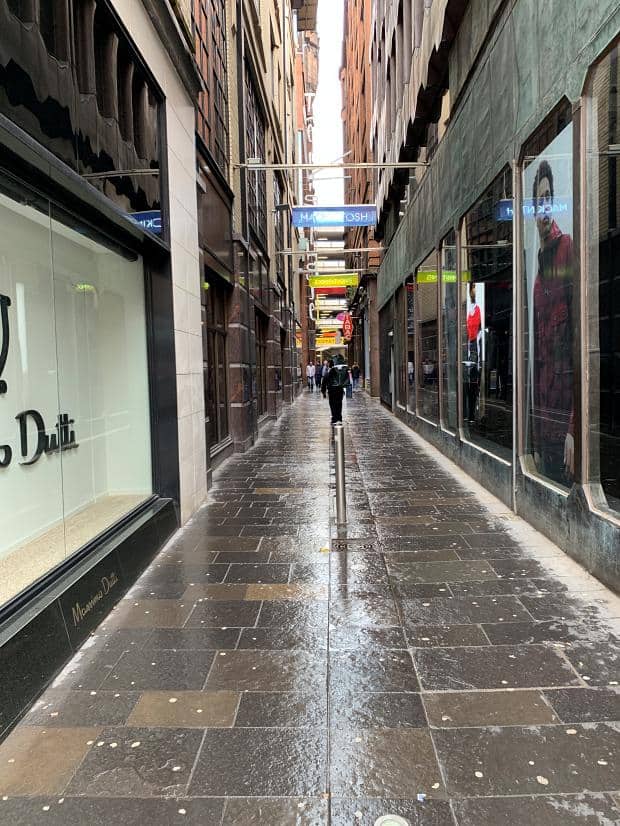
Bath St. Burger
We were walking past the Bath St. Burger and the menu and decor appealed – an American diner experience with shakes and all served on metal trays. On shelves in a booth were a whole bunch of ghetto blasters and the decor leant very strongly to the geek side with Star Wars references left and right.
They had a very strong vegan offering and Ange tried the Halloumi chip butty while I was tempted by the Oklahoma Onion Burger – caramelised so no breath issues! I think we may have over done it with the milkshakes as well, but when it came to waddling out the door I think we had gotten our money’s worth. The fries were a step too far though.
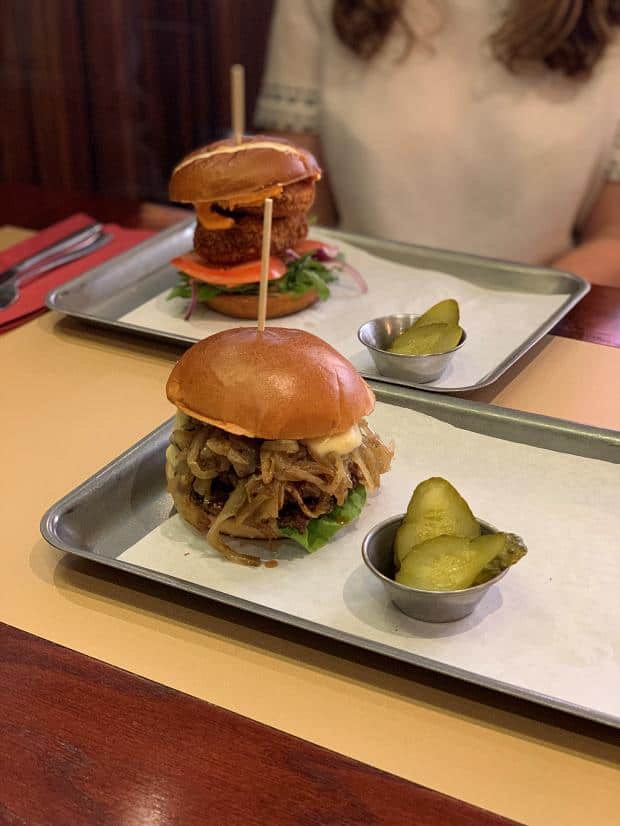
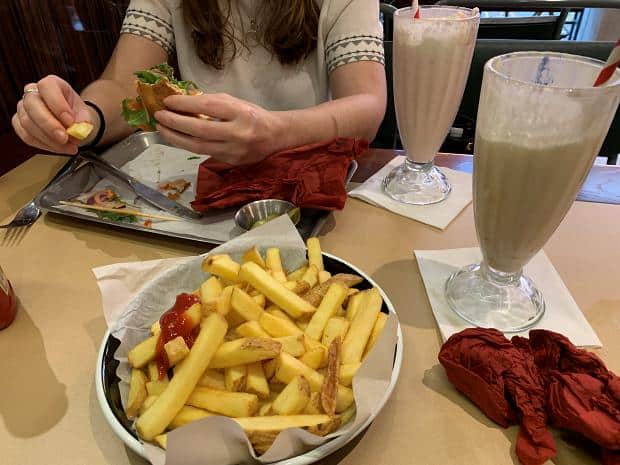
Necropolis
The star of the day though was the Necropolis – a hill on the eastern side of town dating back to Victorian days. Here the rich and famous of Glasgow’s society bought family plots and raised monuments and to stroll through the headstones and crypts is to step back in time.
The cemetery was built in Victorian times when the city of Glasgow more than tripled in size due to immigration from Ireland and the Highlands. It’s accessed from the city by a bridge across the Molendinar Ravine called the Bridge of Sighs. Michael from Old Glasgow notes:
When it was proposed by one John Strang it was described as being ‘the separation between time and eternity’ and bridged the gap over the Molendinar burn, allowing funeral processions easier access into the Necropolis.
Bear in mind that the Necropolis was only the third ‘hygienic’ cemetery in Britain and those being buried in the Necropolis needed the appropriate crossing to their final resting place. A wee wooden bridge across the burn just wouldn’t do.
It was dubbed the Bridge of Sighs and it is thought that this relates to the Ponte dei Sospiri in Venice, the bridge which connects the cities prisons with its courts. I’m willing to bet that it has more to do with the fact that people walking across it were sad. Because of the bereavement, y’know?
A comprehensive guide is available on the Glasgow City Council website.
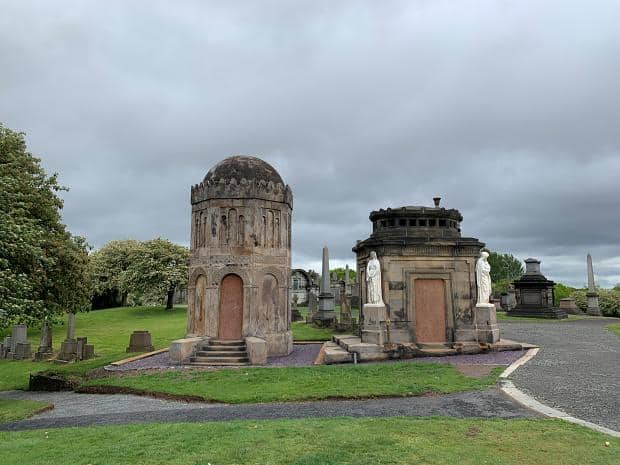
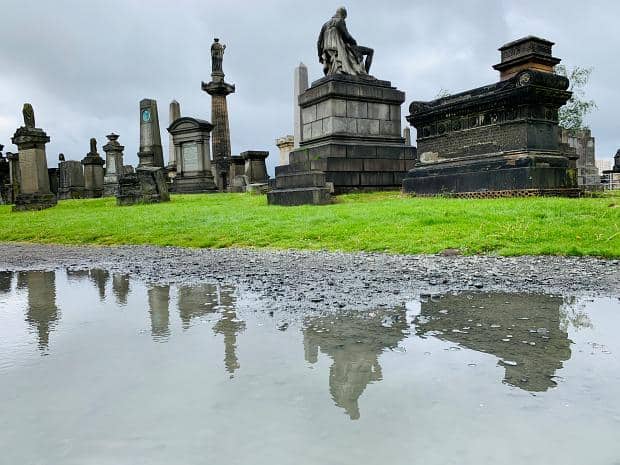
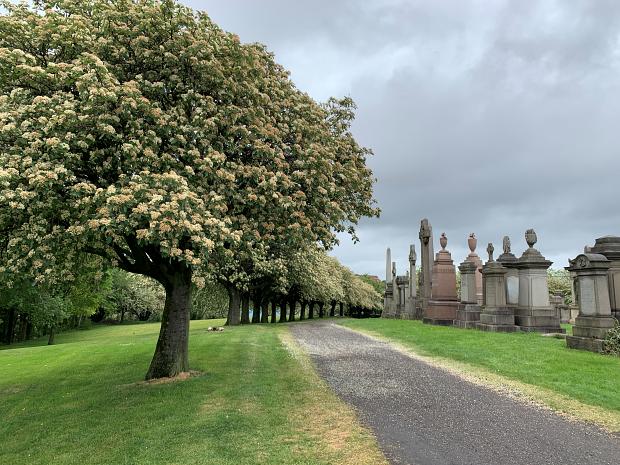
And then it was time to leave. We wandered back, taking in the amazing mural of St Mungo on High Street, before refueling at iCafe Merchant City opposite the Fellow Glasgow Residents Mural (photorealistic depictions of woodlands and farmland creatures).
I caved and got the peppermint hot chocolate with all the trimmings while Ange was much more restrained with her plain hot chocolate. A slice of ginger loaf and a muffin made sure we had enough energy to make it back to the hotel.
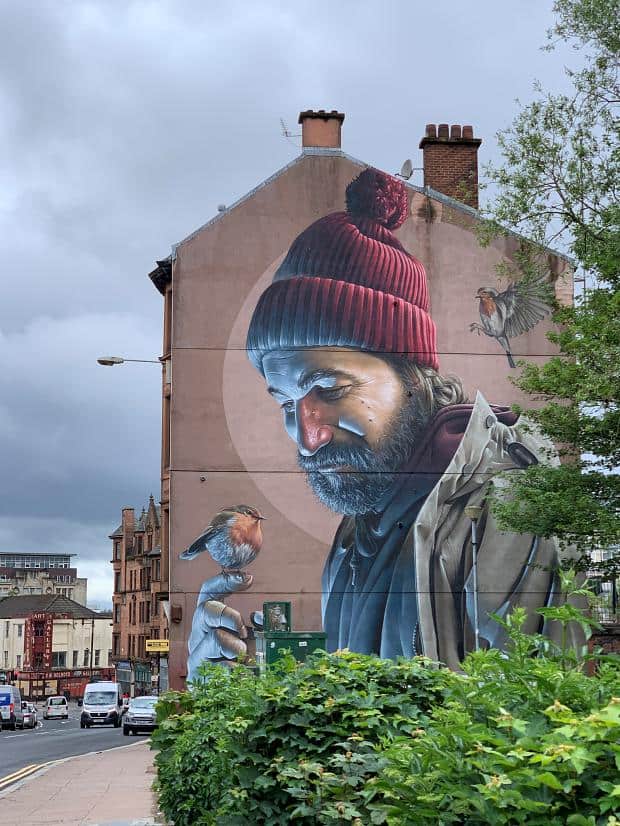
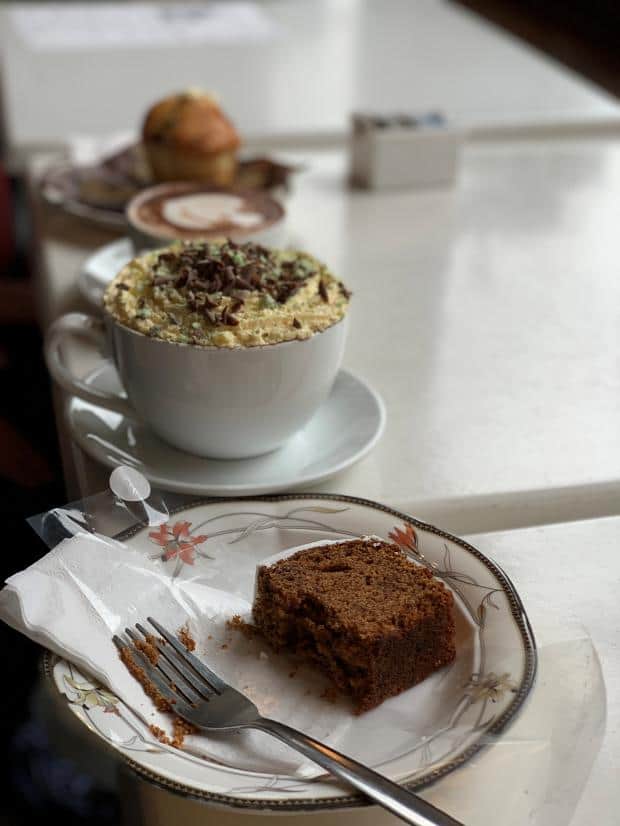
And so that was our whistle stop visit to Glasgow. A brief sojourn down memory lane, a couple of museums and a cemetery. Just scraping the surface of course, but enough to get a flavour for the Glaswegian history and spirit.
